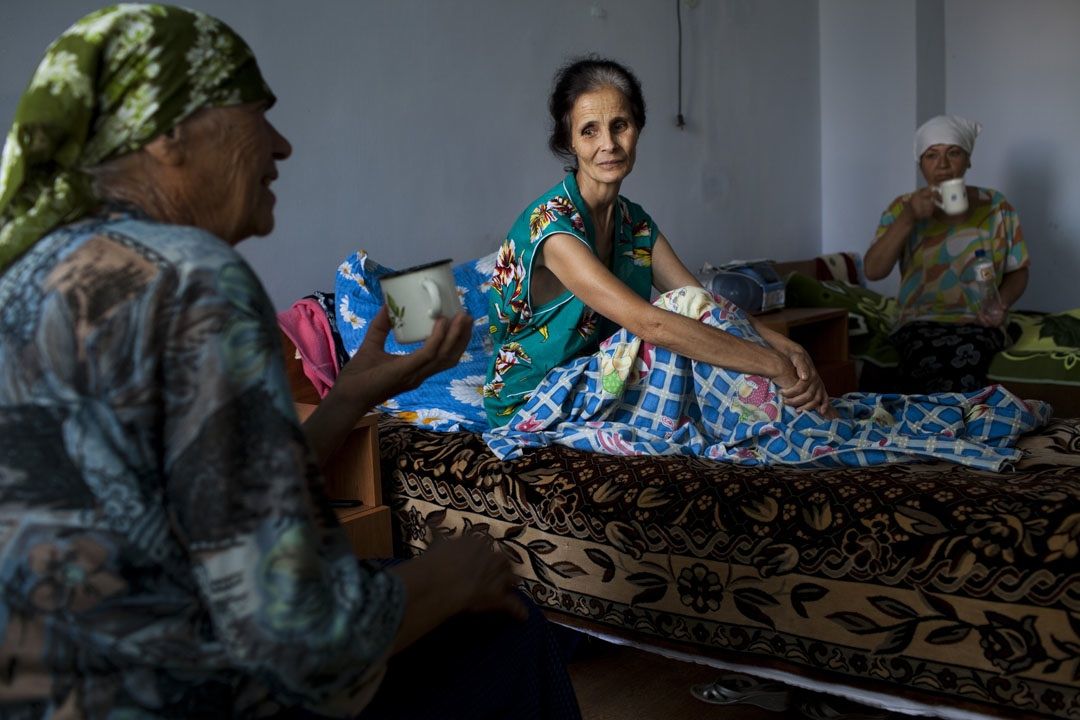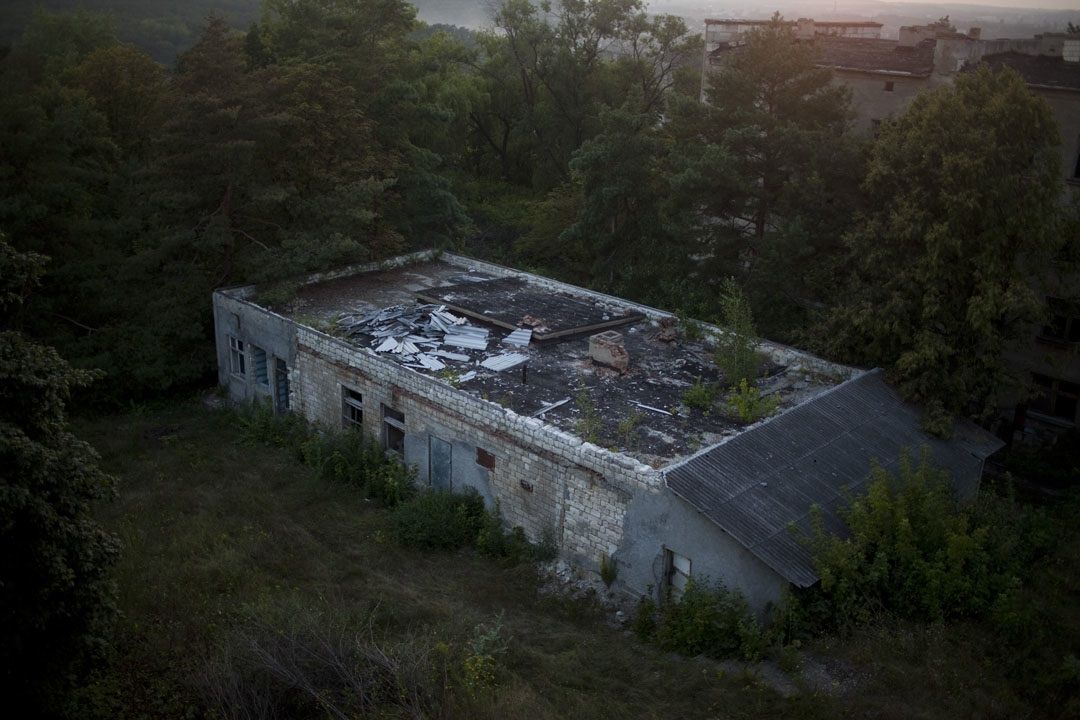The former TB hospital in Balti sits on the outskirts of town, unused and surrounded by overgrown foliage, far from the city's everyday activities. Local health specialists say that it used to be a very good hospital with a large garden on the grounds where patients and their families could walk and different wings to house patients depending on the severity of their symptoms. The day I visited, there were two drunk locals passed out in the trees in front of the wing that once held the sickest patients.
The hospital has been closed since 1999 when authorities, low on cash after the breakup of the Soviet Union, decided that they could no longer afford such a large hospital and, moreoever, that a city the size of Balti didn't require one. The hospital is now empty with crumbling and decaying walls. The rooms are vacant, and only cobwebs, broken windows and dangling electrical wires remain; there are old, glass bottles clustered on the floor of a few rooms. It is an eerie experience to walk the halls of the defunct hospital, seeing total decay alongside remnants of a past productive life: beautiful, decorative tiling in the nurses' offices and large dining halls on every floor with natural light, views of the city and colorful, educational paintings about Tuberculosis on the glass doors. The view becomes even sadder when you consider that this huge, four-story building lies in ruins while the new, smaller TB hospital struggles to keep up with the demand of the region's current TB patients...
Dr. Pablo Ciobanu used to work at the old hospital and is currently the head of in-patient treatment at the new TB hospital, which has nearly 60 percent fewer beds than its predecessor. According to Ciobanu, when closing the larger hospital, the government failed to consider Balti's extraordinarily high TB incidence rate and that a smaller hospital would never be able to meet the city's needs. Moreover, patients from other districts often come to Balti to receive treatment, transforming the hospital, by necessity, from a city service into a regional one.
There are only beds for 190 patients, but the TB ward regularly operates ten to twenty percent above capacity. The first day I visited the hospital, there were 209 patients; a few days later the number had grown to 220.
"I have no choice", says Dr. Ciobanu. "There are very sick patients that I can't refuse, so I try to make space where I can." Each room is meant to hold five patients, already a tight fit that allows for the possibility of cross contamination, and Ciobanu is forced to turn patients away instead of exceeding an upper limit of six patients per room. One of the worst outcomes of the change, according to doctors and nurses, is that the hospital is now near the center of town, putting contagious patients in close proximity to the general public.
The reduction of TB services in Balti mirrors the deterioration of the health infrastructure throughout Moldova after the breakup of the Societ Union. The country faced a huge reduction in economic investment, resulting in fewer health and social services. As poverty rose, the conditions that can lead to people developing active TB, such as poor hygiene or nutrition, also rose, resulting in a spike in TB rates. In addition, many Moldovans left the country in search of work opportunities, often living abroad under terrible conditions before returning to Moldova with TB. Just as the TB rates were rising, Moldova's ability to deal with the disease was decreasing. Dr. Valeriu Crudu, program director at the Center for Health Policies and Studies in Chisinau, estimates that between 1995-2000, the country only had enough resources for 20%-30% of its TB patients.
There was a steady rise in TB rates in the country until the past few years when, thanks to a concerted effort by the government and devleopment organizations, there has been a slight decline. But the decade of neglect took its toll and, at 44 percent, the country currently has one of the highest rates of MDR-TB in the world. Moreover, while total TB cases have decreased over the past few years, TB mortality has remained constant, meaning that a higher percentage of TB patients are dying. This is a direct result of the higher percentage of MDR-TB, which is more deadly and difficult to treat than traditional TB.
Correction: This post was updated August 26, 2010 to reflect that the overall rate of MDR-TB among TB cases in Moldova is 44 percent, as opposed to 22 percent of all new cases.



